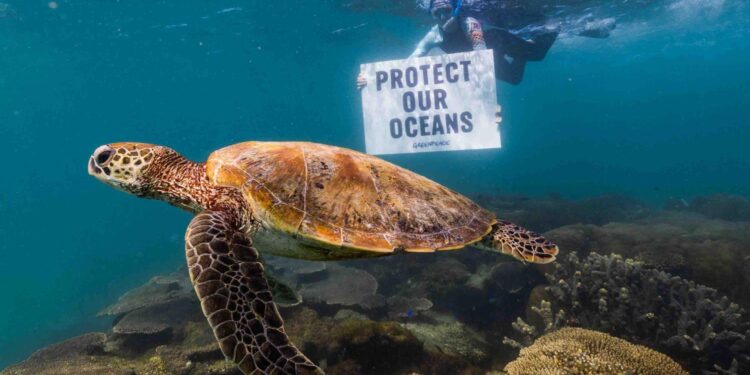Recent research highlights the crucial role of marine protected areas in safeguarding kelp forests against the devastating effects of ocean heatwaves. According to a study reported by ScienceDaily, regions where seas are legally protected show significantly stronger resilience and faster recovery of kelp ecosystems following extreme temperature events. As climate change drives more frequent and intense marine heatwaves, these findings underscore the importance of conservation efforts to preserve vital underwater habitats that support biodiversity and fisheries worldwide.
Protected Seas Foster Resilience in Kelp Forests Amid Rising Ocean Temperatures
Recent studies highlight the crucial role of marine protected areas (MPAs) in safeguarding kelp forests, enabling these vital ecosystems to recover more rapidly from the damaging impact of ocean heatwaves. Unlike unprotected zones, protected seas provide a sanctuary where kelp forests benefit from reduced human stresses such as overfishing and pollution, allowing them to maintain greater biodiversity and ecological balance. This resilience proves essential as global ocean temperatures continue to climb, threatening the structural integrity and survival of kelp habitats.
- Enhanced predator populations: MPAs support healthy fish communities that control sea urchin populations, major grazers of kelp.
- Improved water quality: Reduced pollution and sedimentation help kelp maximize photosynthesis and growth during recovery periods.
- Stable ecological interactions: Protection fosters a balanced environment conducive to natural regeneration.
| Condition | Kelp Recovery Rate | Marine Life Diversity |
|---|---|---|
| Protected Seas | High (75%) | Rich |
| Unprotected Areas | Moderate (40%) | Reduced |
| Heavily Impacted Zones | Low (15%) | Poor |
Scientists advocate for expanding these no-take zones as a strategic response to climate change impacts, emphasizing the interplay between conservation efforts and ecosystem services. The study underscores that resilient kelp forests not only buffer coastal areas from erosion but also act as carbon sinks, helping mitigate global warming. Continued investment in marine protection thus emerges as a critical tool for sustaining marine biodiversity and supporting coastal economies in an era of environmental uncertainty.
New Research Highlights the Role of Marine Reserves in Mitigating Heatwave Damage
Recent studies reveal that marine reserves serve as critical refuges for kelp forests during rising ocean temperatures caused by heatwaves. By restricting human activities such as fishing and coastal development, these protected areas foster healthier ecosystems with greater biodiversity and resilience. Scientists found that kelp forests inside reserves recover more quickly from bleaching and die-offs compared to those in unprotected waters, highlighting the effectiveness of conservation measures in promoting marine ecosystem stability.
- Higher species diversity combats stress from elevated temperatures.
- Reduced pollution and habitat disturbance enable natural regeneration.
- Stronger food webs support kelp growth and overall ecosystem health.
| Location | Heatwave Intensity | Kelp Recovery Rate | Protection Status |
|---|---|---|---|
| Monterey Bay | Moderate | 85% | Marine Reserve |
| Central Coast | Severe | 60% | Unprotected |
| Point Reyes | Moderate | 78% | Marine Reserve |
| Gulf Shores | Severe | 47% | Unprotected |
Experts Call for Expanding Protected Areas to Safeguard Marine Ecosystems from Climate Stress
Recent studies highlight the remarkable resilience of kelp forests within marine protected areas (MPAs) following intense marine heatwaves. Scientists emphasize that these safeguarded zones act as critical refuges, enabling kelp ecosystems to recover at significantly faster rates compared to unprotected regions. The thermal stress caused by climate change has led to widespread kelp decline worldwide, but evidence now suggests that MPAs not only buffer these effects but also promote biodiversity that supports ecosystem stability.
Experts advocate for a strategic expansion of MPAs, stressing several key benefits within these zones:
- Enhanced biodiversity: Protected areas support a wide variety of marine species, boosting ecosystem resilience.
- Reduced human impact: Limiting fishing and coastal development helps mitigate additional stress on vulnerable habitats.
- Climate adaptation: Conserved ecosystems are better equipped to withstand and recover from warming events.
| Region | Recovery Rate in MPAs | Recovery Rate Outside MPAs |
|---|---|---|
| California Coast | 75% | 40% |
| Norwegian Fjords | 82% | 50% |
| Eastern Australia | 78% | 35% |
Key Takeaways
As climate change continues to threaten marine ecosystems worldwide, the resilience of kelp forests within protected seas offers a hopeful glimpse into the future of ocean conservation. This latest research underscores the vital role that marine protected areas play in buffering these underwater forests against the damaging effects of heatwaves. By safeguarding critical habitats and promoting biodiversity, protected seas not only help kelp forests recover but also sustain the broader marine life that depends on them. Continued investment in and expansion of such protected zones may prove essential in preserving these vital ecosystems amid a warming world.































